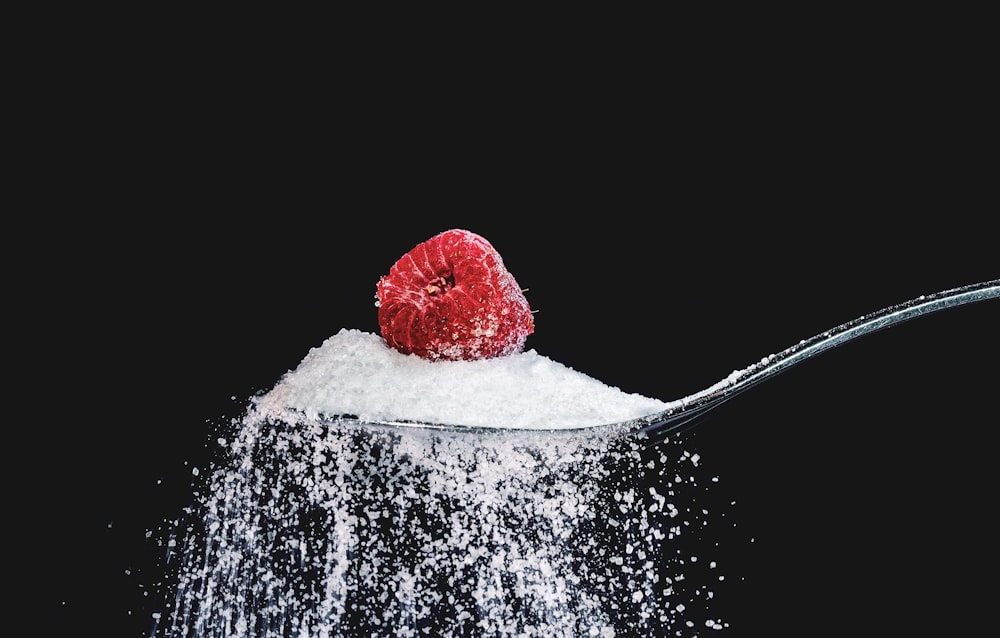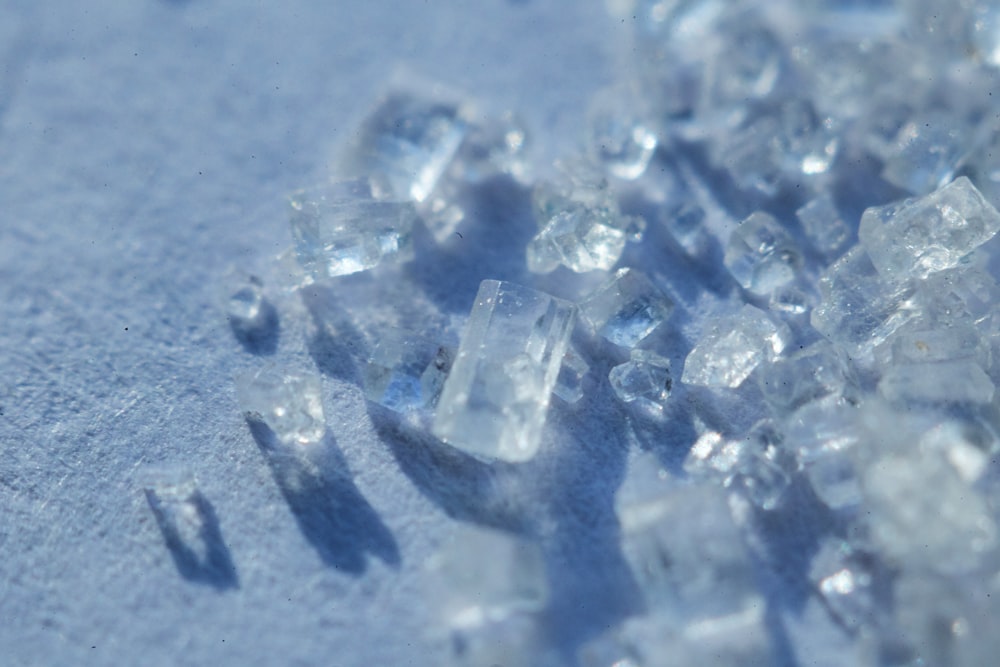Sugar, while essential for our bodies, can easily be overused. An overabundance of sugars in the body can lead to all sorts of malaise, including type 2 diabetes, inflammation, and depression. Unfortunately for those of us watching our sugar levels, when sugar is added to processed foods, it isn’t always clearly listed as sugar. Here we cover more about what sugar is, how it’s processed, and the other names for sugar that are commonly used.
What is Sugar?
The term sugar is a broad blanket term that refers to the simplest carbohydrates; disaccharides and monosaccharides. Monosaccharides include fructose, glucose, and galactose. Disaccharides, such as sucrose, lactose, and maltose, are each made up of a pair of monosaccharides. The disaccharide sucrose, better known simply as sugar, is composed of the monosaccharides glucose and fructose. It is produced by and found in all green plants.
Several plants contain exceptionally high levels of sucrose, most notably sugarcane and sugar beets. The raw material from these plants is processed into the many varieties of sugar, which we then use to sweeten our food.
Cane Sugar
Cane sugar is made from a tall perennial grass known as the sugarcane plant. Granulated sugar from the grocery store is usually made of cane sugar, as are powdered sugar, brown sugar, turbinado, and, of course, whole cane sugar. The differences between each of these include the amount and type of refinement and whether or not molasses is added back into the recipe.
Molasses is a thick dark syrup that is created in the refining process for both cane and sugar-beet sugars. It can range in flavor and color from the sweeter light molasses often used in baking to a robust and slightly bitter blackstrap molasses that makes an excellent addition to marinades for meat.
Sugar-Beet Sugar
Sugar-beet sugar is derived from the root of a beet plant with naturally high levels of sucrose. While sugar beets and sugarcane are very different plants, they both have extremely high sucrose levels and are processed into refined sugar in much the same way. As the final products are very similar in structure, sugar-beet sugar can often be found in the same forms as cane sugar.
Though both sugar-beet and cane sugars are similar, there are some significant differences, including differences in taste, especially when using sugar for baking. Sugar beets, for instance, are more likely to be genetically modified than sugarcane plants, which are typically non-GMO.
In both cases, the raw material is cut or crushed, and the resulting juice is clarified, heated, and reduced into a syrup of sugar and molasses before further processing into its final form. One significant difference in processing methods between cane and beet sugar is the frequent use of bone char as a whitening agent in sugarcane production that isn’t present in beet sugar processing.
Further processing creates several varieties of sugar, including:
Granulated Sugar
To make granulated sugar, the syrup is seeded with sugar crystals to promote crystallization, boiled, and subjected to a centrifuge to remove the majority of the remaining molasses. At this point, the raw sugar crystals are a light golden brown color. The crystals are then re-melted and further refined to remove as many traces of molasses and other minerals as possible. This mixture is crystallized a second time, whitened, dried, and packaged.
Turbinado and Demerara Sugar
These types of sugar, also packaged as “Sugar in the Raw,” aren’t subjected to being melted after their first crystallization, so they retain their golden brown color and some of the deeper flavor from the molasses. The crystals are typically much larger than the crystals of conventional white sugar.
Brown Sugar
Brown sugar is crystallized sugar with molasses added back in. Variations in granule size, stickiness, and depth of flavor are caused by differences in how much molasses is reintroduced and how.
Confectioner’s and Baker’s Sugar
Granulated white sugar is ground even more finely, resulting in either baker’s sugar or confectioner’s sugar. Baker’s sugar, also known as caster or ultra-fine sugar, retains a visibly crystalline texture. Confectioner’s sugar, often referred to as powdered sugar, is powdery in texture and often contains either corn or tapioca starch to prevent it from clumping. Occasionally turbinado or demerara sugar is ground into baker’s or confectioner’s sugar.
Invert Sugar
Invert sugar is produced when regular crystallized sugar is broken down into a liquid mixture of glucose and fructose. It is a more stable liquid than sugar dissolved in water as it has greater stability and is less prone to crystallizing. Either white or raw sugar can be turned into invert sugar.
Non-Crystallized Sugar
Also labeled as evaporated and whole cane or whole beet sugar, this product isn’t subjected to centrifuging at all. Instead, the liquid is evaporated until the sugar crystallizes spontaneously. Sugar made in this method is often formed into solid blocks and still contains all of the molasses by-products. It also tends to absorb water making it difficult to manage for industrial-scale operations.
You may also see cane, beet sugar, or palm or coconut sugar products listed as:
- Blackstrap
- Cane juice
- Cane juice crystals
- Caramel
- Evaporated cane syrup
- Jaggery
- Molasses
- Panela
- Rapadura
- Sucanat
- Treacle
Recognizing Other Names for Sugar on Labels
Many manufacturers introduce additional sweetness to their products via other added sugars. This includes both natural sugars like honey and concentrated fruit juice, as well as more processed products like refined, granulated sugar, and high fructose corn syrup. Ingredients with the name sugar in them—date sugar, palm sugar, icing sugar, are generally assumed to have sugar in them. Unfortunately, not everything that is sugar is listed as sugar on the label. This can lead many people to consume more sugar than they intend to.
Some of the more commonly added sugars that can contribute to your overall sugar intake include:
- Agave nectar
- Beech syrup
- Birch syrup
- Brown rice syrup
- Corn glucose
- Corn glucose syrup
- Corn syrup
- Corn syrup solids
- Date syrup
- Dextrose
- Evaporated corn sweetener
- Fructose crystals
- Fructose syrup
- Fruit juice concentrate
- Galactose
- Glucose
- Glucose-fructose
- Glucose-fructose syrup
- Golden syrup
- High Fructose Corn Syrup
- Honey
- Isolated fructose
- Isoglucose
- Lactose
- Maltose
- Malt syrup
- Maple syrup
- Natural sweeteners
Sugar, by any other name, is still sugar, and consuming too much on a regular basis can be extremely detrimental to our health, regardless of whether it is clearly labeled or is hidden under other names for sugar, like isolated fructose. This list is just a sampling of the many names that sugars can be hidden under in our processed foods. Fortunately, certain words, phrases, and word parts can help us better decipher food labels and recognize the ingredients included in what we eat. Words like syrup, nectar, and malt tend to indicate that there are added sugars in the product. Ingredients that end in -ose, such as fructose, are also typically one form of sugar or another as well.
Read More:
Low Sugar Condiments: 6 Tasty Options










